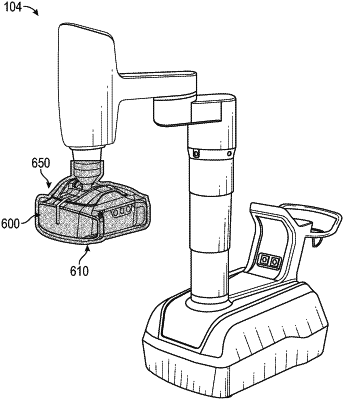| CPC A61B 1/00144 (2013.01) [A61B 1/04 (2013.01); A61B 34/30 (2016.02); A61B 46/10 (2016.02); A61B 46/40 (2016.02); A61B 2034/301 (2016.02)] | 20 Claims |

|
1. An instrument adapter for a robotic surgery apparatus, the instrument adapter comprising:
an adapter housing configured to receive and support an actuator housing of a surgical instrument, the actuator housing comprising a plurality of instrument actuators;
a plurality of interface actuators supported by the adapter housing and configured to engage with the plurality of instrument actuators of the actuator housing and cause movement of the instrument actuators, the movement of the instrument actuators causing movement of an end effector of the surgical instrument;
a guide non-removably connected to the adapter housing and oriented at an angle relative to a plane in which the interface actuators are positioned, the guide configured to permit installation of the actuator housing of the surgical instrument into the adapter housing in a first orientation in which the interface actuators are not engaged with the instrument actuators of the surgical instrument, thereby preventing movement of the end effector of the surgical instrument; and
a fastener supported by the adapter housing and configured to engage the actuator housing of the surgical instrument, the fastener further configured to transition from a first position to a second position to cause the actuator housing installed into the adapter housing to transition from the first orientation in which the interface actuators are not engaged with the instrument actuators of the surgical instrument to a second orientation in which the interface actuators are engaged with the instrument actuators of the surgical instrument, thereby facilitating movement of the end effector of the surgical instrument.
|